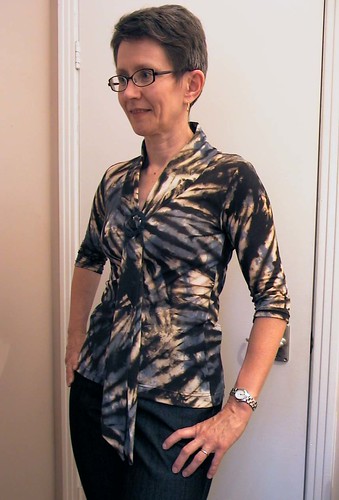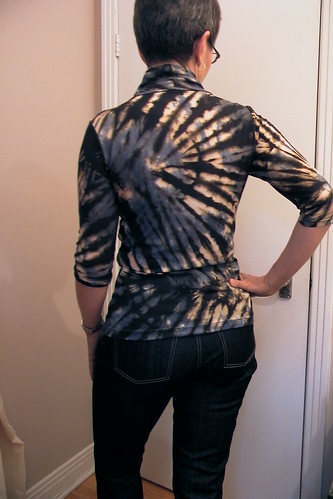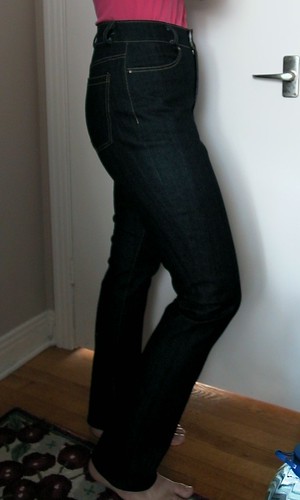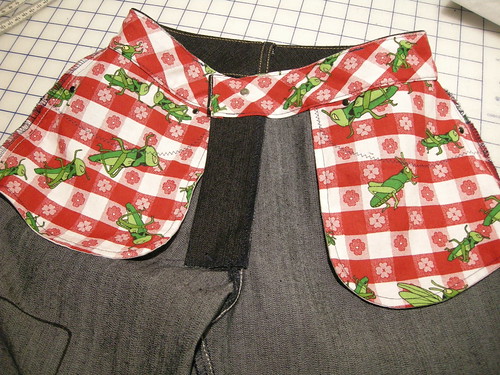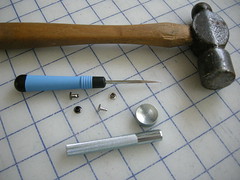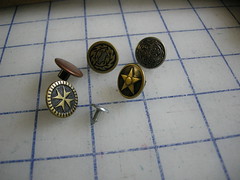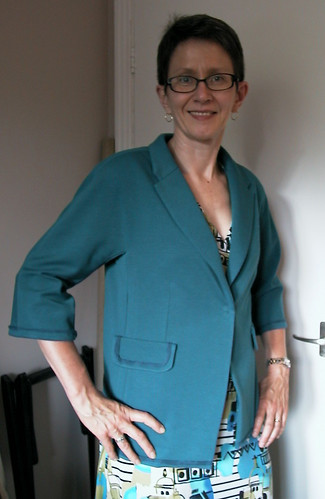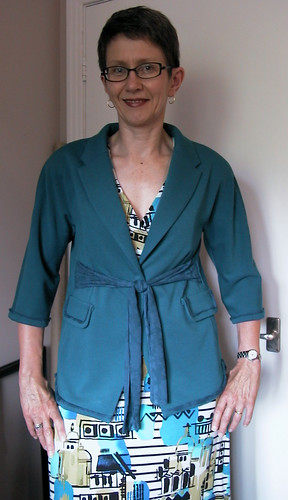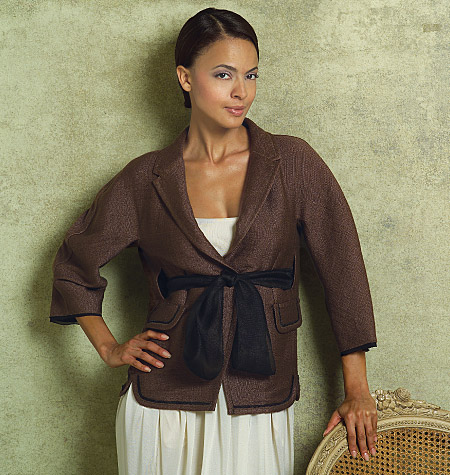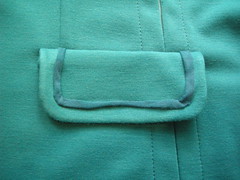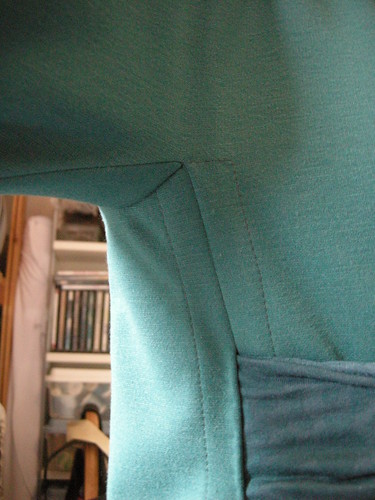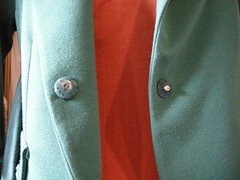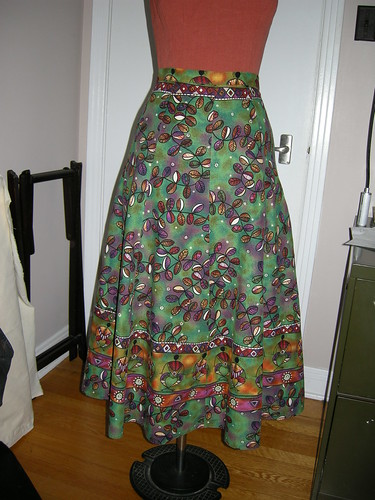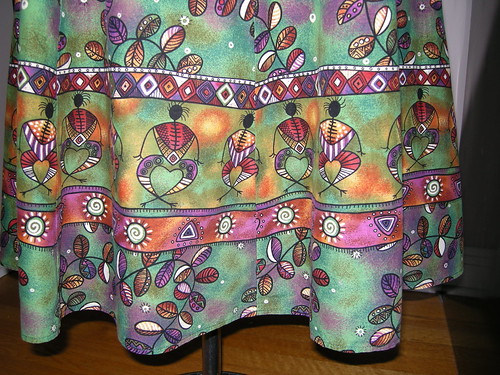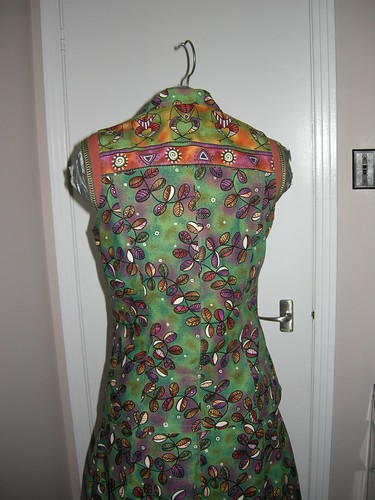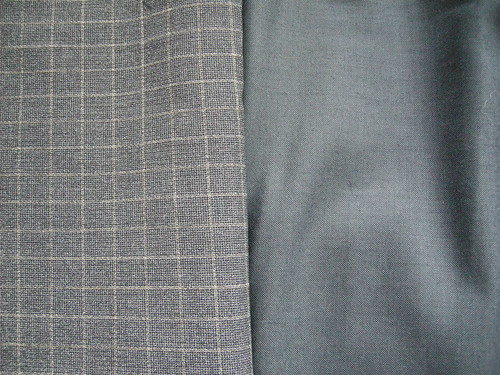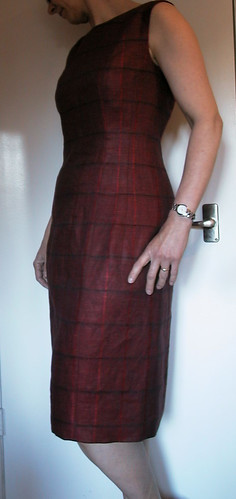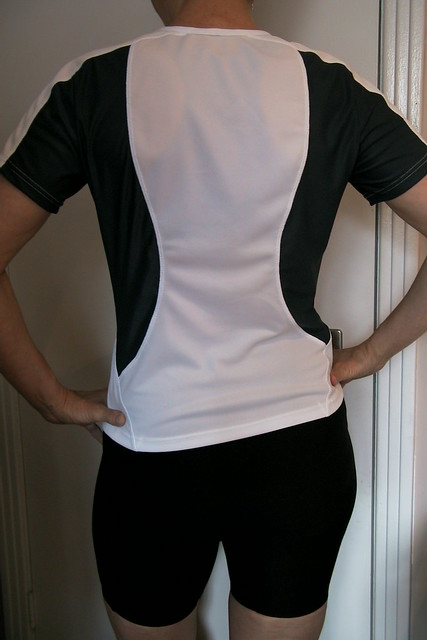If you guessed a working treadle sewing machine, you are correct. The contents, please.
Well, it's a Singer 127 (or 128; not sure, the manual - original - is for both). She's in lovely condition - purchased in 1935, probably in Timmins, Ontario, by Émerilda, the grandmother of the seller. The manual is in French which was Émerilda's mother tongue (though it's clear from the notes and clippings found in the drawers that she was fluently bilingual).
It seems from the drawer contents that Émerilda was still using this machine in the early 1970s, which is kind of remarkable given that my grandmother, who may have been Émerilda's contemporary, had an electric Singer (a Featherweight) much earlier than that. I wonder if Émerilda got a new machine in the 1970s, or if she used this one all of her sewing life?
 At left is the beautiful scroll-work and at right, the shuttle - all clean; no rust. The leather belt is in place and she really goes! So quiet!
At left is the beautiful scroll-work and at right, the shuttle - all clean; no rust. The leather belt is in place and she really goes! So quiet! On to the ephemera and tools that were stuffed into the drawers. Alongside the usual suspects (bags of old metal zippers, spare buttons in pill bottles and bits of trim) were some intriguing items.
Don't you love these promotional rulers? The lower one is a campaign item from a 1971 mayoral race in Timmins. What a thoughtful guy to supply sewing notions as give-aways!

 The next (left) is a mystery. The round part is an expanding metal bracelet-like thing. It stretches to fit over my wrist, but mine are on the small end of wrists so I'm not certain it's meant to be worn in this way. Attached to it is this odd device (right). The end piece is a very thin bit of metal which rotates (with some help). The inscription is PAT 405/14 which tells me nothing in particular. Does anyone reading have any idea what this is?
The next (left) is a mystery. The round part is an expanding metal bracelet-like thing. It stretches to fit over my wrist, but mine are on the small end of wrists so I'm not certain it's meant to be worn in this way. Attached to it is this odd device (right). The end piece is a very thin bit of metal which rotates (with some help). The inscription is PAT 405/14 which tells me nothing in particular. Does anyone reading have any idea what this is? Perhaps the strangest item was this souvenir sewing kit (left) which proudly proclaims "Temagami, Canada". (Temagami is a northern Ontario cottage/summer camp paradise.) The clown's hat is a (plastic) thimble and thread is concealed inside his head. Weird! OTOH I wish we still lived in an era of sewing-related tourist drek.
Perhaps the strangest item was this souvenir sewing kit (left) which proudly proclaims "Temagami, Canada". (Temagami is a northern Ontario cottage/summer camp paradise.) The clown's hat is a (plastic) thimble and thread is concealed inside his head. Weird! OTOH I wish we still lived in an era of sewing-related tourist drek. To the right is a very handy hosiery mending kit. Another promotional item.
The needle book at top is almost complete and very pristine. The other side sports a photo of 4 biplanes flying over a very busy harbour.
The mending tape may be nothing to write home about but I like that it's in the original packaging.
The little taped booklet at the bottom of this photo is clearly Singer propaganda aimed at the younger set. Inside it warbles "Let Us Send You a Singer Machine For Free Trial!" - beware of those dealers who sell (horrors) second-hand! Inside the rear cover is a picture of a machine "For the Little Girl"; a Singer 20 (chain stitch machine) which "is at once a fascinating amusement and a means for instruction in an essential household art".

Last but not least is this intriguing clipping (click to enlarge to readable size). It looks like a free-motion quilting item, but specially designed for making buttonholes. "Twice as neat results in half the time, too!" For "only" $1.00 or three for $2.50. But wait a minute - maybe it was an expensive item after all. Based on some other newspaper items bundled into the drawers, 89¢ would have purchased "strongly-made Blue Red-back Denim overalls" sized to fit children from 8-16 years from Simpson's, one of Canada's original department store chains.
I'm delighted with my purchase; the seller was happy it was going to a sewing home.













